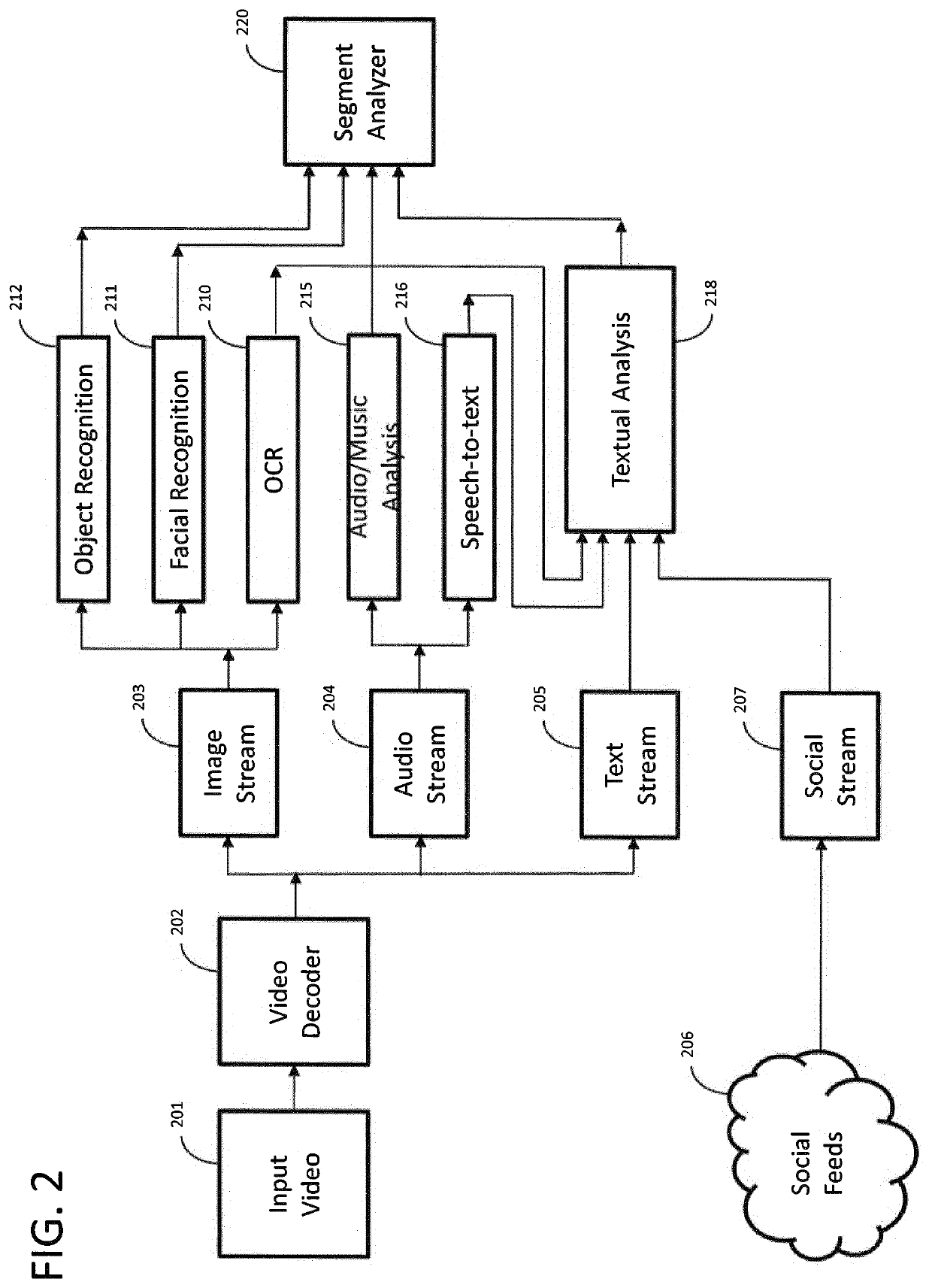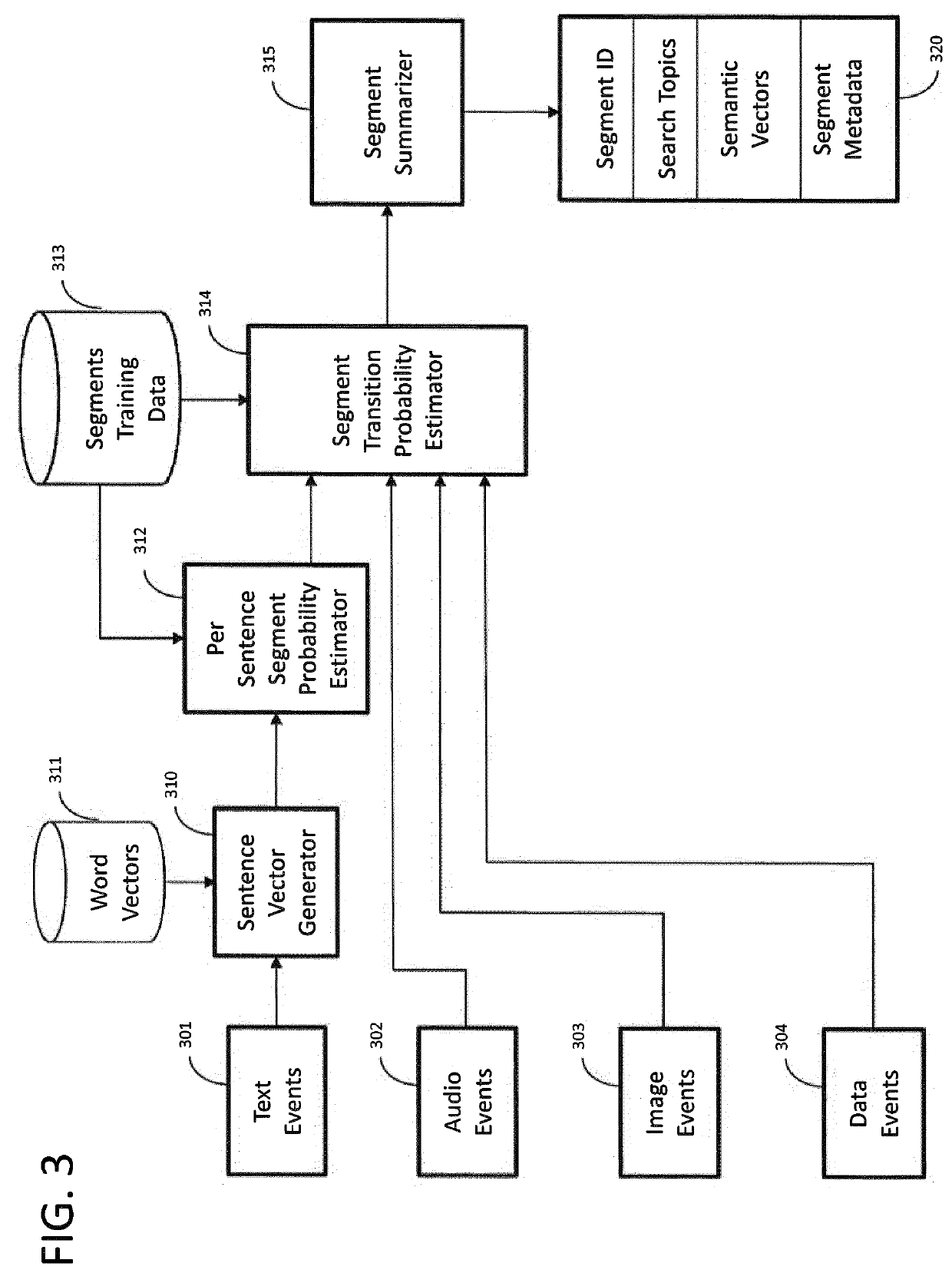Multimedia stream analysis and retrieval
a multimedia stream and analysis technology, applied in the field of multimedia stream analysis, can solve the problems of inability to adapt to a large number of streams or fast-moving news environments, labor-intensive process of clipping videos from linearly produced streams, and inherent delays, so as to improve consumption and retrieval, reduce the burden of viewers, and improve the effect of consumption and retrieval
- Summary
- Abstract
- Description
- Claims
- Application Information
AI Technical Summary
Benefits of technology
Problems solved by technology
Method used
Image
Examples
Embodiment Construction
[0059]In the following description various examples and embodiments are set out for illustration. In particular examples are set out in the context of particular types of content, but this is just for example and does not convey a limitation.
[0060]A system may be specifically engineered for segmentation for the challenge of automatically separating live, linear non-fiction broadcasts (e.g., news broadcasts) into discrete “segments”, by way of identifying the transitions between the end of one subject-matter and the start of another subject matter. Furthermore, once a segment is identified, the entirety of the content within the segment may be analyzed to generate multiple descriptors to summarize what the segment is about. These descriptors may be used to improve the navigation, search, and consumption of segments, for example for the provision of recommendations.
[0061]The segmentation process is composed of two phases. The first phase is the identification of the segment boundaries...
PUM
 Login to view more
Login to view more Abstract
Description
Claims
Application Information
 Login to view more
Login to view more - R&D Engineer
- R&D Manager
- IP Professional
- Industry Leading Data Capabilities
- Powerful AI technology
- Patent DNA Extraction
Browse by: Latest US Patents, China's latest patents, Technical Efficacy Thesaurus, Application Domain, Technology Topic.
© 2024 PatSnap. All rights reserved.Legal|Privacy policy|Modern Slavery Act Transparency Statement|Sitemap



